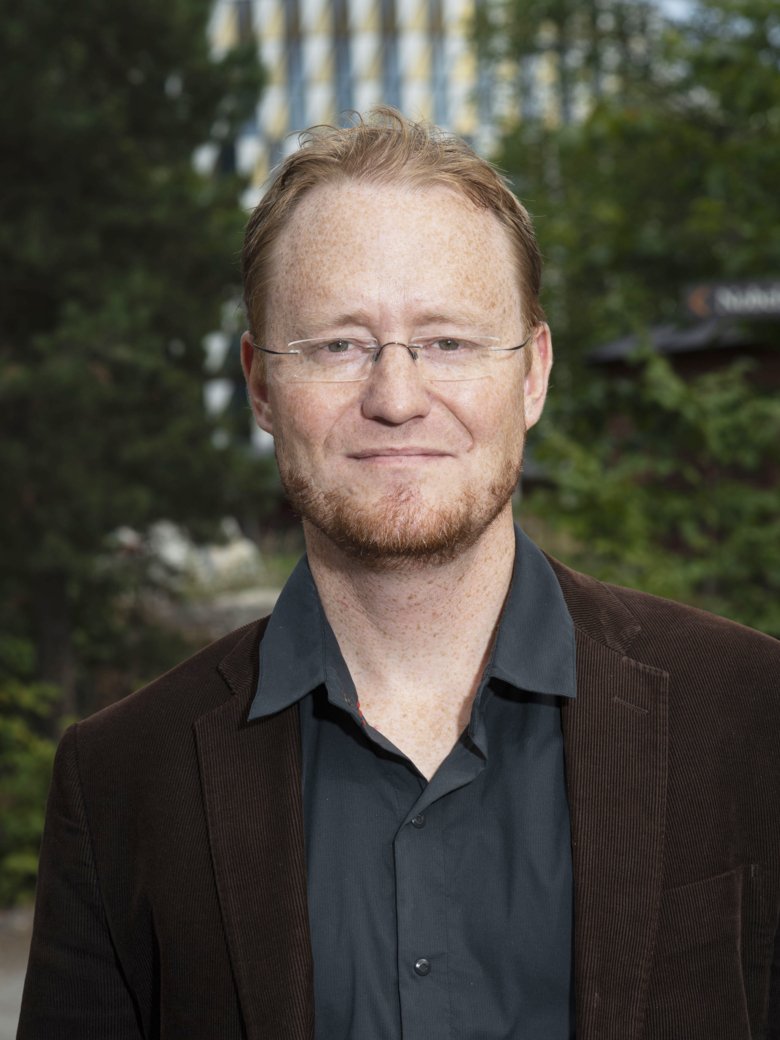DNA origami involves ways in which DNA can be used to build nanoscale constructions. Björn Högberg has improved this technique and uses it for both basic research and the development of clinical applications.

What are you researching?
“In my lab we are researching DNA as a building material for nanoscale construction. The technique is often called ‘DNA origami’ because it involves folding DNA into a three- dimensional structure. Previous methods of DNA origami were very limited in terms of what forms they could create. The structures also fell apart easily outside the lab environment and were therefore unsuitable for use in the body. My group has developed a completely new method that yields more resilient structures and the ability to create more complex geometry. We design the forms in a computer programme that then translates these blueprints into DNA sequences.”
Why build with DNA?
“It is a suitable material for nano- structures for many reasons. DNA can store a great deal of information and is also programmable. It is an endogenous molecule that is very carefully mapped, and the technology for producing customised DNA strings already exists. DNA has also proved to be very reliable – it nearly always folds the way we intend. I am becoming increasingly inclined to believe that DNA origami has been previously used in evolution.”
What would DNA origami be used for?
“One hope is that we can build nanobots that could, for example, transport drugs to precisely the right place in the body. My group researches this type of clinical application, but we also use DNA origami for basic research. Its precision makes it a rewarding tool. Among other things, we study how cells detect proteins on the surface of adjacent cells – what one might call the cells’ tactile communication. Another area is immunology, where we have studied how the strength of an antibody’s binding is affected by the distance between the two antigens to which it binds itself. It turns out that the strongest binding occurs at around 16 nanometres. Now we are continuing our research along all these tracks.”
Text: Anders Nilsson, in translation from Swedish
First published in the booklet From Cell to Society 2019
About Björn Högberg
Professor of Molecular Systems Biophysics at the Department of Medical Biochemistry and Biophysics
Björn Högberg was born in 1975 and grew up in Sundsvall. After receiving his Master of Science in Engineering degree in Engineering Physics at Upp- sala University in 2000, he conducted specialist studies in superconductivity at Chalmers University of Technology and earned a Licentiate of Engineering degree in 2002. He received his doctor- ate in 2007 at Mid Sweden University, Sundsvall, with a doctoral thesis on DNA-mediated nano-structures.
From 2008 to 2010, Björn Högberg worked as a postdoctoral researcher at Harvard Medical School. He came to KI and the Department of Neuroscience in 2010. In 2015 he became an associate professor and moved to the Department of Medical Biochemistry and Biophysics.
Björn Högberg was appointed Professor of Molecular Systems Biophysics at Karolinska Institutet on 1 January 2019.








